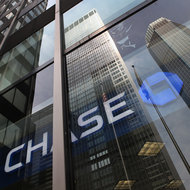LONDON — BP reported first-quarter profit of $4.2 billion on Tuesday, after adjustment for inventory changes and one-off items, handily beating analysts’ forecasts.
Even though profit was 11 percent lower than the same quarter last year, Peter Hutton, an analyst at RBC Capital Markets in London, called the report “a very positive set of results.” Shares in BP rose more than 3 percent in London trading after the earnings announcement.
Mr. Hutton said BP had earned 30 percent more than analysts’ forecasts thanks to start-ups in Angola and Norway and better performance in Trinidad. Mr. Hutton also said costs had been lower than expected.
The chief executive, Robert W. Dudley, said in a statement that “these strong first-quarter results demonstrate the progress BP is making.”
The main disappointment in the quarter was an 18 percent year-on-year fall in production in the United States, probably reflecting the company’s continued struggles to bring back its core deepwater production in the Gulf of Mexico after the blowout disaster of 2010.
BP is a much smaller company than it was before the disaster, which killed 11 people and spilled millions of barrels of oil. Since the start of 2010, BP has sold about $65 billion in assets to pay spill costs and reshape the company. Production in the first quarter, 2.3 million barrels a day, was down about 5 percent compared with the first quarter of 2012 and roughly half the output of ExxonMobil. In 2009, BP’s production was 4 million barrels per day, comparable to Exxon Mobil’s.
The big difference comes from the sale of BP’s 50 percent stake in its Russian affiliate, TNK-BP, to Rosneft for $12.5 billion in cash and $14 billion in shares of Rosneft, which is majority owned by the Russian government. BP’s stake in Rosneft, which rose to 19.75 percent in the transaction, will bring its overall output back over three million barrels per day, the company says.
BP has begun a share buyback worth $8 billion, acquiring shares worth $834 million since Friday, the company said. Mr. Dudley, trying to create a more focused and profitable company, has also trimmed BP’s holdings extensively, even in the Gulf of Mexico.
BP said its production outside Russia would be lower in the second quarter because of maintenance work in the Gulf of Mexico and the North Sea.
BP is drilling extensively in the Gulf of Mexico to bring key properties there to optimal levels. Production has plunged at some of these because of the industrywide moratorium after the oil spill. BP announced this month that it would not go ahead with a second phase of a major Gulf of Mexico field, Mad Dog, because of industry cost inflation.
BP was unable to do the drilling that was needed to maintain production at existing fields like Thunderhorse or to develop new fields like Tiber, which the company found a few months before the blowout. More than any other company, BP is dependent on the Gulf of Mexico for high-margin oil.
BP still faces huge uncertainties over how high the damages from the spill could go. On April 17, a federal judge in New Orleans ended the first phase of a trial to determine, among other matters, whether BP or other parties were grossly negligent in the series of events that led up to the spill. The second phase, focusing on the amount of oil spilled, is to begin in September. What the judge eventually rules could make a difference of tens of billions of dollars in penalties.
In the meantime, the flow of lawsuits continues. BP says it has been among the companies named as defendants in more than 2,200 suits filed in federal and state courts since March 6.
Article source: http://www.nytimes.com/2013/05/01/business/global/bps-4-2-billion-profit-beats-forecasts.html?partner=rss&emc=rss
